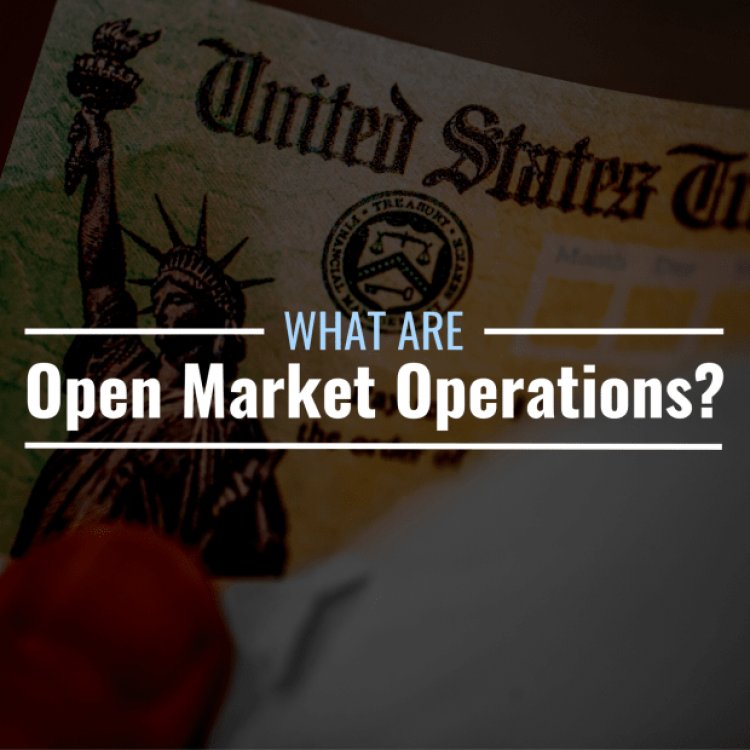What Are Open Market Operations? Definition & Types
What Are Open Market Operations?Open market operations refer to a central bank’s purchase and sale of government securities to implement monetary policy. When a central bank buys its nation’s bonds, it increases the money supply, and when it sells them, money supply decreases. All of these ...


What Are Open Market Operations?
Open market operations refer to a central bank’s purchase and sale of government securities to implement monetary policy. When a central bank buys its nation’s bonds, it increases the money supply, and when it sells them, money supply decreases. All of these buy-and-sell transactions are conducted through open market operations.
How Do Open Market Operations Affect the Money Supply?
Open market operations affect the money supply through banks’ reserves, and the approach can be either passive or active. Passive refers to targeting a specific interest rate and allowing reserves to increase or decrease, while active refers to targeting a specific amount of reserves while allowing interest rates to move freely.
In the U.S., the Federal Reserve uses the passive approach, letting reserves fluctuate to achieve a specific interest rate. For example, in the aftermath of the financial crisis of 2007–2008, the Federal funds rate was targeted at close to zero, allowing reserves to expand and consequently increasing the money supply. In turn, this increase in the money supply through open market operations in the aftermath of the financial crisis helped to boost economic growth, increase employment, and lower inflation rates.
How Do Open Market Operations Work?
Open market operations play an important role in implementing monetary policy as well as trying to achieve the Fed’s financial objectives such as maximum employment, stable prices, and moderate long-term interest rates.
The Federal Open Market Committee sets the target Federal funds rate, but it doesn’t act directly in implementing monetary policy. The task of handling open market operations falls on the Open Market Trading Desk (known as “the Desk”) of the Federal Reserve Bank of New York.
Since the Fed cannot directly buy and sell U.S. government securities, primary dealers are enlisted to handle that function on behalf of the Fed. When the Fed acts to loosen monetary policy and to increase the money supply, the Desk typically sets out the orders for purchases of bonds from the Department of Treasury. Primary dealers place bids on the bonds, and the Desk buys those securities from the dealers. When the Fed buys the securities from a dealer, the dealer's bank sees its reserves increase by the amount the Fed paid for the securities.
Permanent vs. Temporary Transactions
Transactions can either be permanent or temporary. A permanent transaction, usually referred to as a coupon pass, means that the Fed makes outright purchases of securities from primary dealers for its own portfolio, known as the System Open Market Account (SOMA). The Fed says it usually uses these permanent operations to implement the FOMC’s policies of reinvesting principal payments from its holdings of debt and mortgage-backed securities from government-sponsored agencies in agency MBS and of rolling over maturing Treasury securities at auction.
Temporary transactions are conducted with primary dealers through a repurchase agreement (also known as a repo). Repurchase agreements allow primary dealers to temporarily loan government securities to the Fed for cash, but the dealers agree to buy them back in the future at a pre-determined price. At the same time, under repurchase agreements, the Fed sets the interest rate on the transaction of those securities, and the rate on a repurchase agreement is typically at the high end of the target range of the Fed funds rate.
Under these repurchase agreements, the Fed deposits the funds into the checking accounts of the dealers, and this money becomes part of their reserve balances with the Fed. In turn, banks can use this money to extend loans to borrowers. The Fed repeats the cycle for repurchase agreements, effectively increasing the money supply and putting more money into the financial system. That greater availability of money makes borrowing easier and brings down interest rates.
On the flip side, when the Fed tightens monetary policy, the central bank seeks to sell securities, and the dealer is on the buying end of the repurchase transaction in what’s known as a reverse repurchase agreement. In this case, the interest rate is usually on the lower end of the Fed funds rate. Reverse repurchases effectively reduce money supply by decreasing the amount of money in circulation in the financial system. Banks have less money to offer as loans, which raises borrowing costs.
In Expanding Monetary Policy, Repurchase Agreement Typically Leads to an Increase in Money Supply
Action: Fed Buys Bonds, Primary Dealer Sells Bonds
In Contracting Monetary Policy, Reverse Repurchase Agreement Typically Leads to a Decrease in Money Supply
Action: Fed Sells Bonds, Primary Dealer Buys Bonds
How Have Open Market Operations Evolved?
Open market operations have evolved over the years to suit the needs of the Fed, in particular after the financial crisis of 2007–2008. In 2015, when the Fed started to normalize open market operations, it used overnight reverse repurchase agreements as a supplementary policy tool to help keep the Fed funds rate in check. Overnight repurchases were also used extensively around March 2020, when the COVID-19 pandemic struck, to maintain an ample supply of reserves and to support short-term funding for the U.S. dollar.
What's Your Reaction?


























































